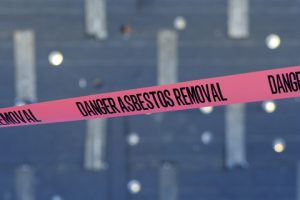Asbestos and the Law
4th March 2019Asbestos has been causing serious medical conditions since approximately 1900. By 1924, a 33-year-old woman died from asbestosis having worked in an asbestos textile factory. After an extensive post-mortem, they quickly realised the cause of her death. It took three years for a report to be published, after which, the term ‘asbestosis’ was used more widely.

Asbestos Industry Regulations of 1931
By 1930, government-commissioned reports conducted research into the health of those who worked directly with asbestos. The report successfully linked exposure to asbestos to asbestosis. By 1931, the Asbestos Industry Regulations ordered that the level of asbestos dust present in factories should be controlled for the sake of the workers.
However, this didn’t apply to those who provided the factories with plumbing or insulation for example. This meant that asbestos could still have been filtered through air ducts or into the water system, once again exposing workers to asbestos.
The Factories Act of 1961
Implemented in 1969, the aim was to protect all workers from exposure to asbestos. This now applied to workers across all industries. In a bid to save the lives of British workers, the new act required tighter controls on the levels of asbestos dust in thousands of workplaces.
The Asbestos Regulations of 1961 invalidated many of the regulations from 1931, making it compulsory for employers to provide safe workplaces. Exposure to any asbestos-based product or process required proper exhaust and regular cleaning, as well as ensuring workers were wearing appropriate protective clothing and using the correct equipment.
The Voluntary Asbestos Import Ban of 1970
During the late sixties, the first personal injury claim related to negligent asbestos exposure was won. In a bid to ensure this didn’t happen again, the government started to develop a voluntary asbestos ban. However, to appease public demand (as the negative press was bad for business), blue asbestos became somewhat of a scapegoat for asbestos-related illnesses.
Mined in South Africa and Western Australia by non-British companies, blue asbestos made up 3% of the world’s total production. This 1970 decision didn’t ban the import of asbestos products entirely, as blue asbestos was still allowed to enter into the UK. Many argue that this import ban did nothing more than pacify the public.
Asbestos Legislation During the 20th Century
As the century slowly came to a close, scientific and technological advances helped the government to realise the true dangers of asbestos. The most profound developments occurred through the seventies, eighties and nineties, starting with the Health and Safety at Work Act 1974 and ending with The Asbestos Prohibition (Amended) Regulations of 1999.
By 1999, aside from a few products, the import, supply and use of Asbestos Containing Materials (ACMs), was banned. Products that contained levels of Chrysotile (white asbestos) were subsequently outlawed, along with automobile ACMs, all within the same year.
Asbestos Bans in the 21st Century
By 2000, all importation and production of asbestos-based products were banned in the UK. Despite this, it is estimated that half of the buildings constructed in the UK before 1999 could contain traces of asbestos. In 2002, The Control of Asbestos at Work Regulations of 1987 (CAW 1987) was updated to include the management of domestic premises.
The Control of Asbestos Regulations of 2012 (CAR12) updated previous legislation, meaning that all non-licensed work relating to asbestos was tightly regulated. Training is available to ensure that everyone is protected from asbestos exposure.
Here at Asbestos Waste Solutions, we believe that a safe, reliable, responsible approach to collecting and disposing of asbestos products is paramount. Our friendly and knowledgeable experts can provide a fully comprehensive service that you can count on. If you think you may be at risk or require more information, contact us today, we’re happy to help.
This entry was posted in Asbestos Removal. Bookmark the permalink.

 Follow
Follow